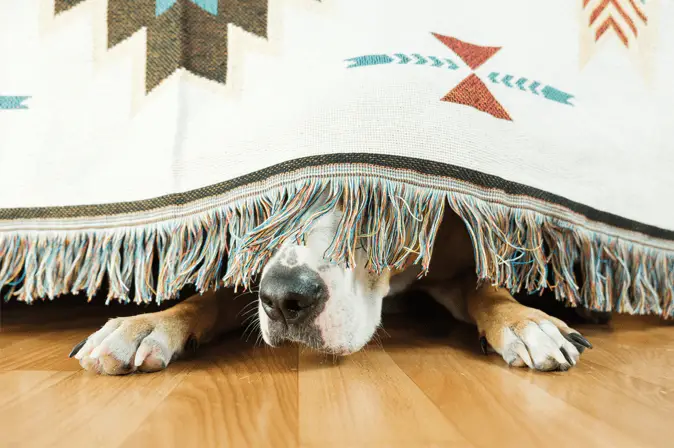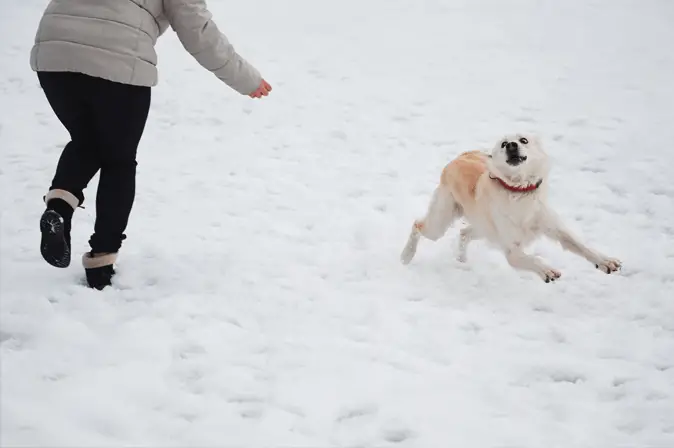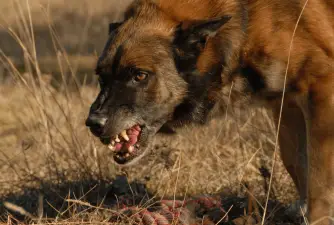The 5 Most Common Behavioral Problems with Solutions
12.12.2021.
Becoming a new dog owner is exciting. Most of us will focus on the positive sides of dog ownership - the playing, cuddling, training, and just overall good times we will have with our new beloved puppy. However, many of us rarely stop and think about potential behavioral problems we will need to address. Letting a dog misbehave can be very dangerous. A dog with bad manners is a bite risk, which can have tragic consequences for all parties involved.
Of course, behavioral problems are not something most of us will focus on. We will start looking for solutions and advice only when the dog starts exhibiting those problems. It is good to learn what those problems might be and how you can react the first time your dog exhibits those behaviors. Here are the most common behavioral problems in dogs and what you can do about them;
1. Barking
Dogs will naturally bark; it’s simply something they do. However, nuisance barking can become tiring, irritating, and difficult to live with. Plus, you can be sure your neighbors will not be too pleased with that. If a dog develops nuisance barking as a behavioral issue, you might risk eviction, fines, and sleepless nights. This is considered a mid-level issue, and it needs to be addressed as soon as possible.

What can I do?
The first thing you need to do is understand why your dog is barking. The most common reasons are nervousness and boredom. Energetic dogs have too much pent-up energy, and they need to let it out somewhere. You can fix that by making sure your dog has plenty of physical activity. If a dog is nervous, you can use calming dog treats and physical activity as a quick “fix.”
2. Biting
This is a “problem” most puppies will have. In fact, it is not considered a real problem because biting things is simply a way a puppy will learn about different textures, materials, and things in their environment. They don’t have hands that will allow them to feel a specific item; they need to bite it to see what it is. Most new dog owners get irritated when their puppies overdo it with the biting. Those thin, razor-sharp teeth can be pretty uncomfortable. If this is an issue with an older dog, you might want to look for a professional trainer’s help.

What can I do?
Most of us will think, “What can I do to stop my puppy from biting?” The good news is that if your puppy is trained and is in a stable environment, the problem will most likely go away when their adult teeth kick in. In the meantime, you can simply make biting a neutral experience. Puppies bite your hand for a simple reason - it’s fun. They get a reaction from you, and you play with them. However, you can achieve the neutral experience and take the “fun” out of biting by grabbing the dog’s soft tissue on the lower part of their jaw, where there is nothing but skin. That’s not fun for them, and they will slowly learn to stop biting. Just make sure you don’t accidentally hurt your puppy. Keep the “grab” gentle.
3. Food begging
Food begging is probably one of the most common issues dog owners are faced with. Their dogs simply cannot help themselves when they smell something nice from the kitchen. The dog will come right next to the person eating and start demonstrating their best puppy eye impression. They can even whine, bark, or paw at the person eating. They will do anything they can to grab a bite of whatever it is the person’s eating.

What can I do?
There are a couple of things you can do if your dog is constantly begging for food. The first and most important thing is - make sure your dog knows that begging for food will not actually get them anything to eat. Never feed your dog table scraps. It’s unhealthy, and your dog gets everything it needs from its dog food. The second thing you can do is give them a bit of onion to smell or lemon to taste. We can tell you from personal experience that as soon as dogs smell onion, they will move away. However, some dogs are determined, and even that won’t drive them away. Make sure your dog doesn’t grab that piece of the onion because it is toxic to them.
4. Fear of unfamiliar noises
There are different things dogs can be afraid of, like lawnmowers, thunderstorms, fireworks, construction working noises, etc. This can be very problematic, especially if you live in an area where those things are common. Dogs can develop phobias, and that type of fear brings different risks. Dogs become bite-risk, fleeing-risk, and can even develop health issues like dermatitis. This can be quite a difficult problem to tackle, but with the right approach, it is possible.

What can I do?
For a quick “fix,” you can try giving your dog calming treats or CBD oil. These will have a mildly sedative effect, and your dog might sleep right through the noise. A long-term solution might be a combination of supplements (like Solliquin), medications, and training. The only proven effect is training. You can desensitize your dog by playing sounds in your home. The best thing is to use a soothing voice, create a safe place where they will feel comfortable, and start associating treats with things that scare them. That way, loud noises will mean something good is coming.
5. Disobedience
One of the most common issues dog owners come across is disobedience. There are different reasons a dog might not listen to you. The dog hasn’t been properly trained since they were a puppy, or you might have adopted a dog that will simply not listen to anything you say. Professionals differentiate two types of dog disobedience; passive and active. Passive disobedience is when the dog seems indifferent to your commands, and active is when the dog appears to be enjoying its disobedient behavior. The latter one is a bigger problem.

What can I do?
Fixing this issue is not a short process. Most dog owners will need to go through basic obedience training from scratch. This behavioral issue in dogs usually means the roles at home are not set up correctly. Dog owners need to make some fundamental changes. We know how frustrating this can be, but you shouldn’t try to punish your disobedient dog. You should never use negative training methods, and punishing a dog can end up in a bite. If nothing works, ask professional dog trainers for help.
World Dog Finder team







Share